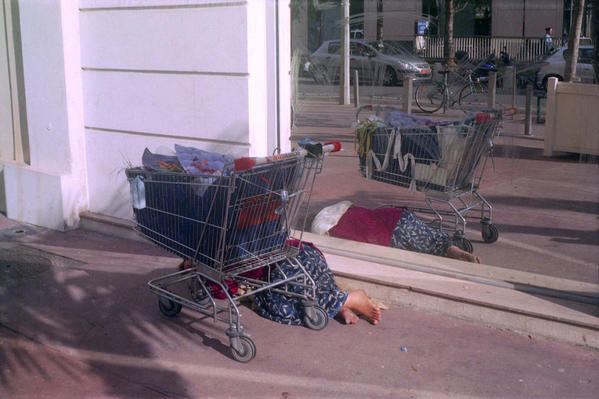
Released last week, “Recent Violence in a Community-Based Sample of Homeless and Unstably Housed Women With High Levels of Psychiatric Comorbidity” confirms common sense and lived experience as it adds some new twists … and leaves some out. The study looked at 300 homeless and unstably housed women in San Francisco.
Common sense and lived experience confirmed: “Violence against homeless women (i.e., women who sleep in a shelter or public place) and women who are unstably housed (i.e., those who are displaced or move often and women who sleep at homes of friends, family, associates, or strangers because they have no other shelter) is disproportionately common.”
Not terribly surprising: Almost all the women “met criteria” for at least one psychiatric condition, one mental health disorder, and one substance-related disorder. “Most study participants experienced comorbidity”, meaning they live with two or more chronic disorders.
60% of the women had experienced some type of violence prior to being interviewed. And here’s where some twists begin: “Violence was disproportionately perpetrated by non-primary partners.” Half of the women experienced emotional violence from a non-primary partner. Almost twice as many experienced physical violence from a non-primary partner as from a primary; and more than three times as many experienced sexual violence from a non-primary partner as from a primary partner.
According to the researchers, the odds of non-primary partner violence increased with a greater number of psychiatric diagnoses; a higher level of social connection; being White; having unmet subsistence needs. Being HIV positive decreased the odds of non-primary partner violence.
Violence from primary partners increased with age, being White, multiple psychiatric diagnoses, and a higher level of social connection.
While some of the social markers surprised the researchers, what really got their attention was the social connection link. It suggests that, for homeless and unstably housed women, social isolation makes sense. The less socially connected a woman is, the less likely she is to be hurt.
While the authors of the study don’t invoke “intersectionality”, they rely on it, to the extent that they insist that violence against homeless and unstably housed women must include emotional, physical and sexual violence.
The study misses economic violence, which is structural, and so misses prison. Given the privatization of streets and the criminalization of those who live on the streets, women with multiple disorders struggle with violence on the streets and are shunted off to jail and prison, where they receive less than no help, and then are dumped back onto the streets, where the cycle accelerates and intensifies.
The report concludes: “The high level of violence in this population exceeds reports from many previous studies because of its inclusion of emotional violence, perpetrators who were not primary or domestic partners, and a sensitive screening instrument. Comprehensive screening for violence against impoverished women in health care settings is needed, and these data suggest that this is especially true for mental health and drug treatment providers caring for impoverished women with high levels of psychiatric comorbidity. Referrals for care, counseling, and safety plans should prioritize basic subsistence needs (housing, food, clothing, and hygiene needs), psychiatric assessment, and care. Finally, providers must understand that rather than a negative predictor of health and safety, social isolation may be an effective means for some impoverished women to extricate themselves from a potentially dangerous environment in the absence of other options.”
The absence of other options is prison. High and excessive levels of violence against women and high levels of incarceration of women are part of the global story of severely reduced to eliminated mental health and all public services, of severely reduced to eliminated affordable housing, of severely reduced to eliminated jobs, of severely reduced to eliminated safe public spaces for women, and of astronomically expanded police forces and prisons.
(Photo Credit: ACES Connection)